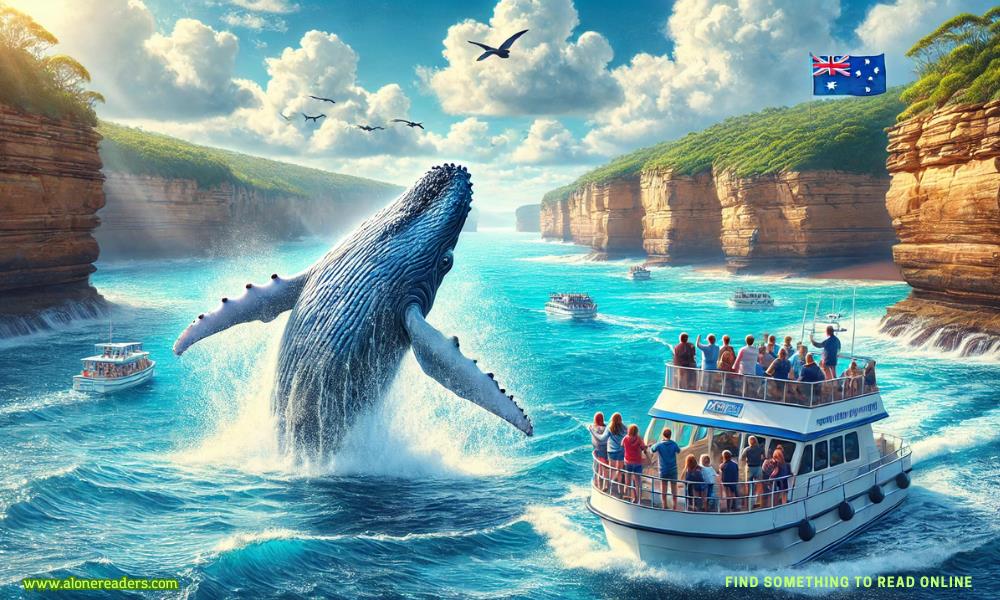
Australia is a dream destination for nature lovers and adventure seekers alike. Among its many natural wonders, whale watching stands out as a truly unforgettable experience. Imagine sailing through pristine blue waters while witnessing majestic giants breach and play in their natural habitat. Whether you’re an experienced traveler or a first-time visitor, Australia offers an array of breathtaking locations and seasonal opportunities to get up close with these magnificent creatures. In this travel blog post, we explore the best spots, the optimal times to visit, essential travel tips, accommodation options, dining experiences, estimated expenses, and safety precautions for your whale watching adventure Down Under.
Australia’s vast coastline is home to diverse marine life, and whale watching has become one of its most popular attractions. From the crystal-clear waters of Queensland to the rugged coastlines of Victoria, each destination offers a unique perspective on the lives of these gentle giants. The excitement of whale watching lies not just in the sight of the whales themselves, but also in the stunning natural surroundings and the cultural charm of the coastal towns that host these tours. In this post, we’ll guide you through where and when to plan your journey, ensuring that you have all the details needed to make your trip both memorable and hassle-free.
Australia boasts several hotspots that attract whale enthusiasts from around the globe. Here are a few must-visit locations:
Hervey Bay, Queensland
Often referred to as the “Whale Watching Capital of Australia,” Hervey Bay offers a front-row seat to humpback whales as they migrate along the coast. The calm waters of the bay provide an ideal environment for prolonged sightings.
Sydney, New South Wales
Sydney is not only famous for its iconic Opera House and Harbour Bridge but also offers excellent whale watching tours, especially during the migration season from May to November.
Phillip Island, Victoria
Phillip Island is renowned for its wildlife experiences. Although famous for its penguin parade, the island also offers seasonal whale watching tours with spectacular coastal views.
The Great Ocean Road, Victoria
A drive along the Great Ocean Road not only offers stunning coastal scenery but also a chance to spot migrating whales. The dramatic cliffs and natural rock formations make for a picturesque backdrop.
Timing is crucial to maximize your chances of witnessing these magnificent creatures. In Australia, the whale watching season varies slightly by location:
During these months, the water is generally calmer and the weather is more temperate, creating ideal conditions for marine life to thrive and for you to enjoy your tour in comfort.
Traveling to Australia for whale watching is both exciting and convenient. Here’s a breakdown of transportation options:
Budgeting for transportation will depend on your starting point and travel style. On average, domestic flights range from AUD 150-300, car rentals start at around AUD 50 per day, and bus rides are generally under AUD 30 per trip.
Australia offers a wide range of accommodation options, from luxury hotels to cozy bed and breakfasts, ensuring that every traveler can find a comfortable place to rest after a day of adventure.
Accommodations:
Dining:
Australian coastal towns are known for their fresh seafood and multicultural cuisine.
A typical daily budget, including accommodation, meals, and a whale watching tour, may range from AUD 200-300 per person. This estimate can fluctuate based on travel style and the level of comfort you desire.
While whale watching is the main attraction, these regions offer plenty of other activities to fill your itinerary:
These additional activities not only enrich your experience but also provide a broader understanding of Australia’s natural and cultural landscape.
Planning a trip involves budgeting for various expenses. Here’s a rough estimate to help you prepare:
Overall, a week-long whale watching trip in Australia may cost anywhere from AUD 1,200 to 2,000 per person, depending on your travel preferences and the destinations you choose.
Before you set off on your adventure, consider the following tips and precautions:
By following these guidelines, you’ll help ensure a safe and enjoyable trip while contributing to the conservation of Australia’s marine environment.
Conclusion: Embark on Your Unforgettable Whale Watching Journey
Whale watching in Australia is more than just a travel activity—it’s an immersive experience that connects you with the wonders of nature. From the serene bays of Hervey Bay to the vibrant cityscapes of Sydney and the rugged beauty of the Great Ocean Road, Australia offers a variety of settings where the thrill of witnessing these magnificent creatures in their natural habitat becomes a cherished memory. With careful planning, a modest budget, and a spirit of adventure, your whale watching journey in Australia is bound to be one of the most rewarding experiences of your lifetime.
So pack your bags, prepare for an adventure on the high seas, and get ready to witness the majestic ballet of whales dancing in the wild blue. Australia awaits with open arms and an abundance of natural beauty just waiting to be explored.
Happy travels and may your voyage be filled with awe and wonder!